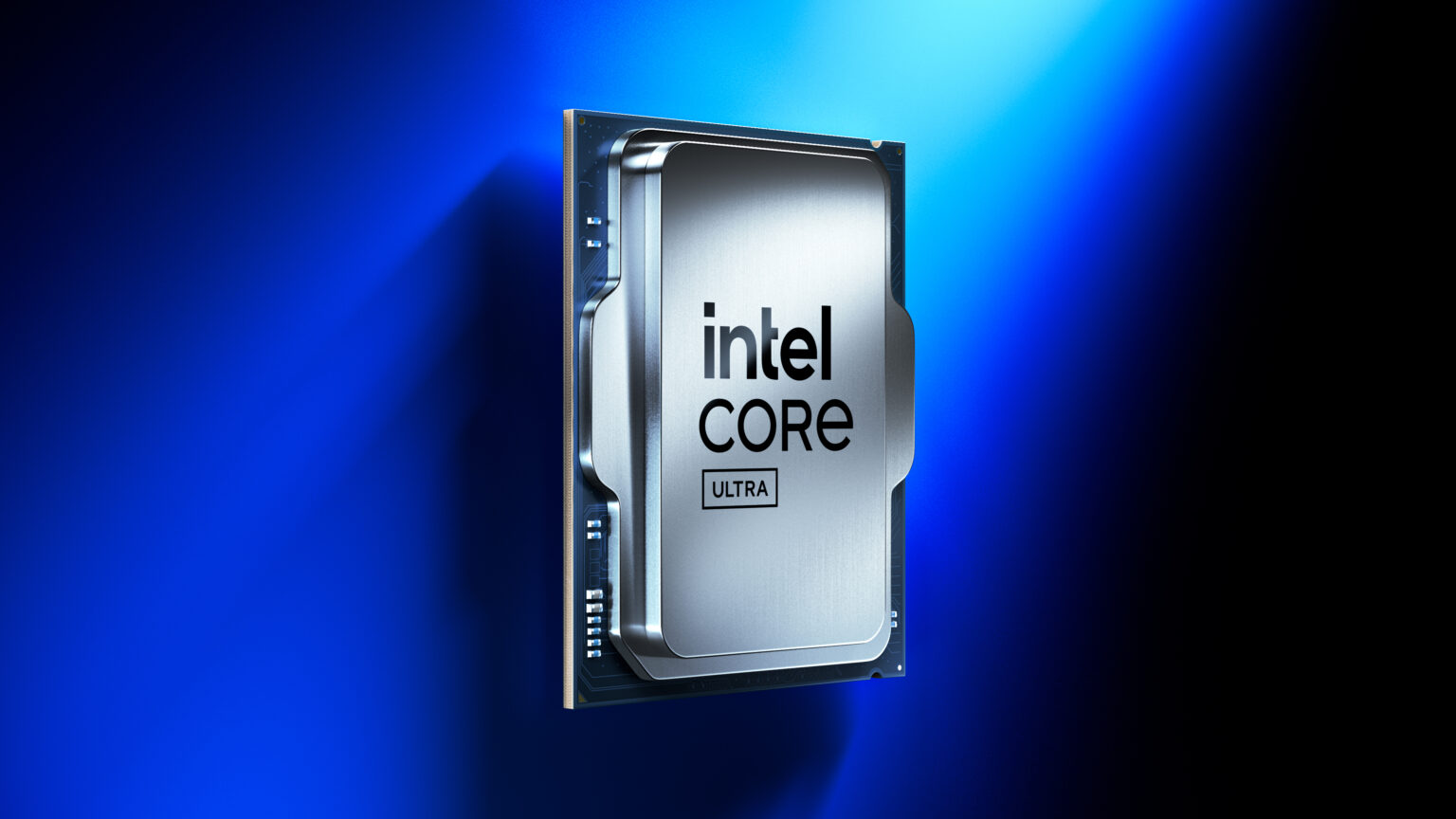Tests indicate Intel's '200S Boost' feature provides no real gain for Arrow Lake CPUs on Linux
Intel 200S Boost results were within the margin of error.

As revealed by Phoronix, Intel's new '200S Boost' feature for its Arrow Lake chips results in little to no performance improvements on Linux. This parallels our 200S Boost testing in Windows, where memory overclocking from DDR5-6400 to DDR5-8000 accounted for most of the performance increases across gaming and productivity.
In the six months following Arrow Lake's debut, Intel has issued several fixes to extract every last bit of performance from these chips. The first wave was delivered via Windows Updates and updated BIOS versions in December, addressing several major issues. Following that, board partners released the long-awaited 0x114 microcode in January through BIOS updates carrying the ME19.0.0.1854v2.2 firmware.
Earlier this month, Intel debuted its IPO program in China, allowing System Integrators to offer enhanced power ratings and clock speeds under warranty. Similar to IPO, Intel's '200S Boost' profiles are opt-in BIOS presets available globally, enabling higher fabric, die-to-die, and memory-transfer speeds than stock.
Phoronix's test suite features the Core Ultra 9 285K, the Asus ROG Maximus Z890 Hero (1801 BIOS), the RX 7900 XTX, and 32GB of DDR5-6400 memory. The tests were conducted in Ubuntu 25.04 with the Linux kernel version 6.14. Gaming remained largely similar to stock, with small improvements in Counter-Strike 2 and Batman: Arkham Knight, while Dirt Rally 2.0 saw a significant drop in FPS (456 FPS vs 406 FPS) when switching to the boost profile.
Moving to productivity, compilation tests were slightly faster with no real impact on rendering workloads. That's generally the sentiment across most real-world or synthetic benchmarks, and there's a good reason for that. The most significant factor driving the gains observed with Intel's 200S Boost is the support for faster memory speeds. If you want to get the most out of these profiles, consider faster DDR5-7200 or DDR5-8000 memory kits, because the results from only overclocking the NGU or D2D interconnects are imperceptible. Our testing corroborates that.
Phoronix's test bench stuck to a standard DDR5-6400 kit, and the improvements were so tiny you needed to look for them. We saw a similar effect in Windows when comparing the boost profile vs stock using the same DDR5-6400 kit, for a 0.8% increase in FPS across a geomean of 16 games.
While this is a step in the right direction, you'll need a better memory kit for actual improvements. Likewise, these profiles don't exactly guarantee stability with faster RAM. They only offer warranty coverage, and I'm guessing most people who buy DDR5-8000 kits are already using them at their rated speeds with XMP.
Get Tom's Hardware's best news and in-depth reviews, straight to your inbox.
Follow Tom's Hardware on Google News to get our up-to-date news, analysis, and reviews in your feeds. Make sure to click the Follow button.

Hassam Nasir is a die-hard hardware enthusiast with years of experience as a tech editor and writer, focusing on detailed CPU comparisons and general hardware news. When he’s not working, you’ll find him bending tubes for his ever-evolving custom water-loop gaming rig or benchmarking the latest CPUs and GPUs just for fun.
-
Stomx This year both Intel and AMD will deliver their new chips made by their Oregon and Arizona latest fab 0.019874 nm technology. Versus previous year 0.02 nm technology chips this will bring 0.044% improvement in fps, TOPS, FP2 and FP4. Major BIOSes already made them compatible with all existing motherboards made after 2035 with additional improvements in speed by up to whopping 0.0005353%Reply -
thestryker None of the links in the article appear to have a link to the Phoronix article (I may have just missed it) so just in case: https://www.phoronix.com/review/intel-200s-boost-linuxReply
While modifying NGU clocks don't do much increasing D2D clocks lowers memory latency. So while it will make a noticeable difference for particularly sensitive workloads it doesn't do much outside of that. I believe Hitman 3 is one of the more memory sensitive games and I think one of the Ubisoft engines is as well, but I don't recall which one. -
TerryLaze https://forums.tomshardware.com/threads/intel-core-ultra-9-285k-performance-sees-6-improvement-on-linux-%E2%80%94-arrow-lake-boosts-even-without-new-200s-boost-bios.3878236/Reply
Well, linux already had the same amount of improvement that the boost provides without the boost so it makes sense that the boost doesn't boost the boost even boostier. -
TerryLaze Reply
Well unless you come up with a way to make individual atoms behave like they are completely isolated from physics then that's where technology is at the moment, we can only make baby steps because physics is a cruel mistress and doesn't allow us to do what we want.Stomx said:This year both Intel and AMD will deliver their new chips made by their Oregon and Arizona latest fab 0.019874 nm technology. Versus previous year 0.02 nm technology chips this will bring 0.044% improvement in fps, TOPS, FP2 and FP4. Major BIOSes already made them compatible with all existing motherboards made after 2035 with additional improvements in speed by up to whopping 0.0005353% -
Pierce2623 Reply
Just because node gains tapered off doesn’t mean IPC has to as well. If they’d get the creative juices flowing I’m sure we could get more IPC increases. As long as the big boys continue to only make core pipelines wider with larger out of order engines, sure node gains are need to even realize those IPC gains but some out of the box thinking could shake things up.TerryLaze said:Well unless you come up with a way to make individual atoms behave like they are completely isolated from physics then that's where technology is at the moment, we can only make baby steps because physics is a cruel mistress and doesn't allow us to do what we want. -
JRStern Not a big surprise, takes a lot of balancing to make all the parts play together now, can't just drop a faster crystal on the motherboard and get speed, like I did with my IBM PC-AT circa 1986.Reply
Besides, 99% of PC users don't care, an i5 running stock is plenty for them. -
Amdlova @JRStern I have here a 14700T Pl1 50w PL2 105w Fassssssssssssssssssssssst as hell 4.8ghz with 50w Intel make notebook cpus for desktops from 4.8ghz to 5.5ghz need to push more 200w! lolReply -
TerryLaze Reply
No, to get more IPC you have to literally find a way to make electrons "move faster" so you can switch transistors from on to off faster, one way of doing that is to just make the distance they have to travel shorter, hence smaller nodes.Pierce2623 said:Just because node gains tapered off doesn’t mean IPC has to as well. If they’d get the creative juices flowing I’m sure we could get more IPC increases. As long as the big boys continue to only make core pipelines wider with larger out of order engines, sure node gains are need to even realize those IPC gains but some out of the box thinking could shake things up.
The other way would be to change the laws of physics....
Or to go to different materials which would allow the electrons to move faster but humanity is trying that for decades now with very little progress.
Micromanaging the flow with wider pipelines and OoO (or huge caches like the x3d) and so on is the only thing they can do. -
Pierce2623 Reply
Switching transistors on and off faster is the freaking opposite of IPC increases….. That’s literally a clock speed increase…because of that being so far off base, I’m not even bothering with the rest.TerryLaze said:No, to get more IPC you have to literally find a way to make electrons "move faster" so you can switch transistors from on to off faster, one way of doing that is to just make the distance they have to travel shorter, hence smaller nodes.
The other way would be to change the laws of physics....
Or to go to different materials which would allow the electrons to move faster but humanity is trying that for decades now with very little progress.
Micromanaging the flow with wider pipelines and OoO (or huge caches like the x3d) and so on is the only thing they can do. -
TerryLaze Reply
So you don't agree with them making the cores wider to actually get more instructions done per cycle and you are also against them increasing the amount of cycles to increase the performance in that way......Pierce2623 said:Switching transistors on and off faster is the freaking opposite of IPC increases….. That’s literally a clock speed increase…because of that being so far off base, I’m not even bothering with the rest.
So you just want magic, "just do it" .